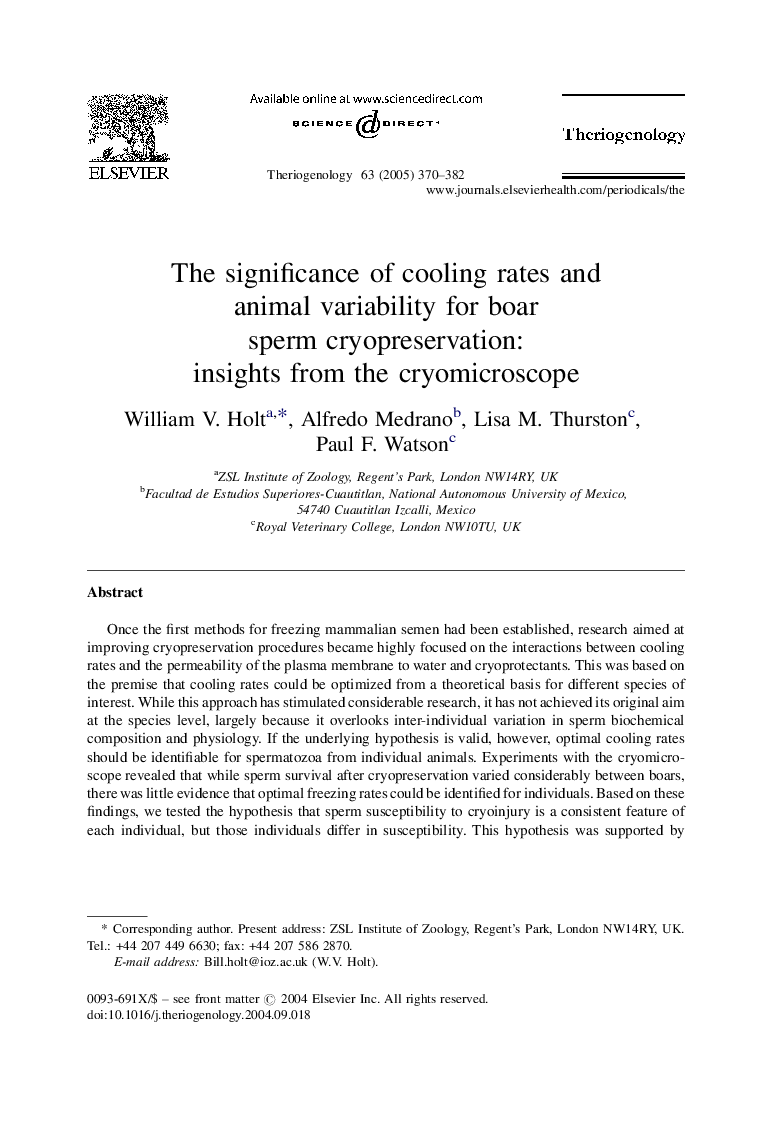| Article ID | Journal | Published Year | Pages | File Type |
|---|---|---|---|---|
| 10893341 | Theriogenology | 2005 | 13 Pages |
Abstract
Once the first methods for freezing mammalian semen had been established, research aimed at improving cryopreservation procedures became highly focused on the interactions between cooling rates and the permeability of the plasma membrane to water and cryoprotectants. This was based on the premise that cooling rates could be optimized from a theoretical basis for different species of interest. While this approach has stimulated considerable research, it has not achieved its original aim at the species level, largely because it overlooks inter-individual variation in sperm biochemical composition and physiology. If the underlying hypothesis is valid, however, optimal cooling rates should be identifiable for spermatozoa from individual animals. Experiments with the cryomicroscope revealed that while sperm survival after cryopreservation varied considerably between boars, there was little evidence that optimal freezing rates could be identified for individuals. Based on these findings, we tested the hypothesis that sperm susceptibility to cryoinjury is a consistent feature of each individual, but those individuals differ in susceptibility. This hypothesis was supported by evidence from an experiment with >100 boars; moreover, using genetic analyses, we demonstrated genomic differences between individual boars that correlated with post-thaw sperm quality.
Keywords
Related Topics
Life Sciences
Agricultural and Biological Sciences
Animal Science and Zoology
Authors
William V. Holt, Alfredo Medrano, Lisa M. Thurston, Paul F. Watson,
